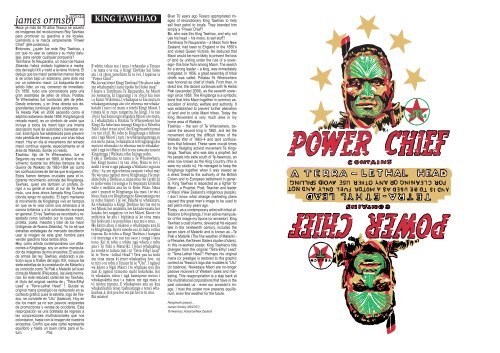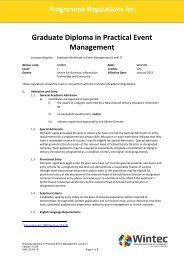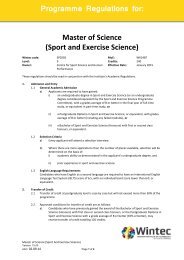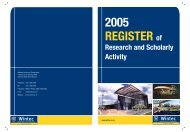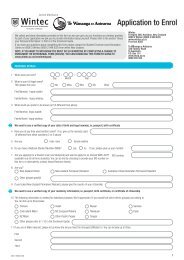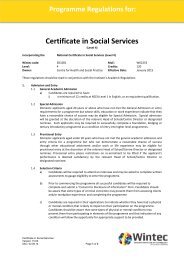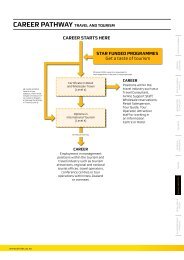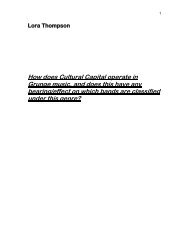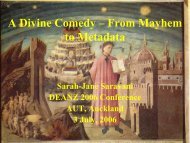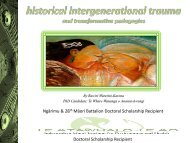james ormsby artistaHace ya más de 70 años Texaco se adueñóde imágenes del revolucionario Rey Tawhiaopara promover su gasolina a los locales.Llamándo a la marca simplemente “PowerChief” (jefe poderoso).Entonces, ¿quién fue este Rey Tawhiao, ypor que no usar su cabeza y su moko (tatuaje),para vender cualquier porquería?Tamihana Te Rauparaha, un maori de NuevaZelanda, había visitado Inglaterra a mediadosdel siglo IXX y visitó a la reina Victoria. Éldedujo que los maori perderían menos tierrassi se unían bajo un soberano, pero ésta vezpor un soberano maori. La búsqueda de unsólido líder, un rey, comenzó de inmediato.En 1856, hubo una convocatoria para unagran asamblea de jefes de tribus. PotatauTe Wherowheo fue nombrado jefe de jefes.Desde entonces, y en línea directa sus descendientescontinúan siendo soberanos.Te Heieta Paki en 2006 ascendió como elséptimo soberano desde 1858. Kingitanga (elreinado maori), es un símbolo de unión queincluye a todos los maori bajo una mismaasociación royal de autoridad y bienestar social.Esta figura fue establecida para prevenirmás pérdida de tierras y para unir a las tribusmaori. Hoy en día el mecanismo del reinadomaori continua vigente, especialmente en elárea de Waikato, donde yo resido.Tawhiao, hijo de Te Wherowhero, fue elSegundo rey maori en 1860, él lideró el movimientodurante los difíciles tiempos de laGuerra de Waikato de 1863-1864 así comolas confiscaciones de tierras que le siguieron.Estos fueron tiempos cruciales para el incipientemovimiento activista del Kingitanga.Tawhiao, quien era también un profeta, dirigióa su gente al exilio al sur de Te Awamutu,una área ahora llamada King Country(donde tengo mi estudio). Él logró mantenerel movimiento de Kingitanga vivo en tiemposen que se le veía como una amenaza a lacorona británica y a la colonización europeaen general. El rey Tawhiao es recordado y respetadocomo luchador por la causa maori,profeta, poeta, maestro y líder de los maori(indígenas de Nueva Zelanda). Yo no sé queextrañas estrategias de mercado decidieronusar la imagen de este gran hombre paravender gasolina hace tantos años.Hoy, como artista contemporáneo con afiliacionesa Kingitanga, soy un activo manipuladorde imágenes de mis ancestros. El escudode armas del rey Tawhiao, elaborado a peticiónsuya a finales del siglo IXX, incluye lassiete estrellas de la constelación de Matariki yes conocido como Te Paki o Matariki (el buenclima de Matariki (Pléyades), las siete hermanas.En este retocado cartel del rey Tawhiao,el título del original cambia de ¡ “Tetra-EthylLead” a “Terra-Lethal Head” !. Quizás suoriginal mana (prestigio) es restaurado en sucontexto gráfico pues la estrella, logo de Texaco,se convierte en “Utu” (balance). Hoy endía los maori ya no son pasivos recipientesde promociones y ventas de occidente. Estareapropiación es una bofetada de regreso alas corporaciones multinacionales que noscolonizaron, hasta con la imagen de nuestrosancestros. Confío que este cartel representeequilibrio y hasta un buen clima para el futuro.Paz.KING TAWHIAOE whitu tekau tau i mua i whanako a Texacoi te mata o te toa, o Kīngi Tāwhiao hei hokoatu i tā rātou penehinu ki te iwi. I tapaina ia“Power Chief”.Nā, ko wai tēnei Kīngi Tāwhiao? He aha te takeme whakamahi i tana ūpoko hei hoko mea?I haere a Tamihana Te Rauparaha, he Māorinō Aotearoa, ki Ingarangi i te 1850s kia toroi a Kuini Wikitōria. I whakapae ia kia mutu tewhakangarotanga atu o te whenua me whakakotahii raro i te maru o tētehi Kīngi Māori. Itīmata ki te rapu rangatira, he kīngi. I te tau1856 i hui katoa ngā rangatira Māori o te motu,ā, i whakatūria a Potatau Te Wherowhero heiKīngi. Ka heke taua rārangi Kīngi ki a TūheitiaPaki (i eke i te tau 2006) he Kīngi tuawhitu maii te tau 1858. He tohu te Kīngitanga e tūhonoana i ngā Māori i raro i te whanaungatanga, teora me te mana. I whakatūria te Kīngitanga kiamutu te whanako i te whenua me te whakakotahii ngā iwi Māori. Kei te ora rawa atu tonu teKīngitanga i Waikato, tōku kāinga noho.I eke a Tāwhaiao, te tama a Te Wherowhero,hei Kīngi tuarua i te tau 1860. Nāna te iwi iārahi i te wā o ngā pakanga a Waikato i nga tau1863 – 64 me nga whenua raupatu i whai mai.He wā uaua ngēnei mo te Kīngitanga. He matakitehoki a Tāwhiao, a, nāna tōna iwi i ārahi kite noho wehe i te tonga o Te Awamutu ki tētehiwāhi e mōhitia ana ko te Rohe Pōtae. Nānaanō i pupuri te Kīngitanga kia mau i te wā ikitea i taea e te Kīngitanga te Kāwanatanga mete noho hāpori i te iwi Pākehā te whakararu.Ka whakanuia a Kingi Tāwhiao hei toa mō teiwi Māori, hei matakite, hei kaituhi waiata, heikaiako, hei rangatira i te iwi Māori. Kāore i temōhiotia he aha i hiahiatia ai ko tōna matahei hoko atu i te penehinu i aua tau o mua.He kaitoi ahau o nāianei e whakapapa ana kite Kīngitanga. Kei te raweke au i te mata o tōkutupuna. Ko te tohu a Kīngi Tāwhiao, i hangaiai te mutunga o te rau tau 1900 i runga i tanatono. Kei te tohu e whitu ngā whetū e tohuana i Te Paki o Matariki. I tēnei whakaahuaka rerekē te taitara mai i te ‘Tetra-Ethyl Lead”ki te ‘Terra –Lethal Head”! Tērā pea ka hokiatu tōna mana ki tēnei whakaahua hou nāte tīni o te tohu a Texaco ki te “Utu”. I ngēneiwā kāore a Ngāi Māori i te whakaae noa ihomai ki ngēnei tūmomo mahi hokohoko. Keite whakautu rātou i ngā kamupene nunui iwhakapākehā mai i a mātou me ngā mata otō mātou tupuna. E whakapono ana au kuawhakatikahia tēnei tūāhuatanga e tēnei whakaahua,ā, tērā pea hei wā pai kei te tū mai.Pai mārire!Over 70 years ago Texaco appropriated imagesof revolutionary King Tawhiao to helpsell their petrol to locals. They branded himsimply a “Power Chief”!So, who was this King Tawhiao, and why notuse his head – his moko, to sell stuff?Tamihana Te Rauparaha – a Maori from NewZealand, had been to England in the 1850’sand visited Queen Victoria. He deduced thatMaori would be more likely to prevent the lossof land by uniting under the rule of a sovereign-this time from among Maori. The searchfor a strong leader – a king, was immediatelyinstigated. In 1856, a great assembly of tribalchiefs was called. Potatau Te Wherowherowas honored as chief of chiefs. From then, indirect line, the decent continues with Te HeitiaPaki (ascended 2006), as the seventh sovereignsince 1858. The Kingitanga is a symbolicbond that links Maori together in common associationof kinship, welfare and authority. Itwas established to prevent further alienationof land and to unite Maori tribes. Today theKing Movement is very much alive in myhome area of Waikato.Tawhiao – the son of Te Wherowhero, becamethe second king in 1860, and led themovement during the difficult times of theWaikato War of 1863–4 and land confiscationsthat followed. These were crucial timesfor the fledgling activist movement Te Kingitanga.Tawhiao, who was also a prophet, ledhis people into exile south of Te Awamutu, anarea now known as the King Country (this iswere my studio is). He managed to keep theKingitanga together when it was viewed asa direct threat to the authority of the BritishCrown and to European settlement in general.King Tawhiao is respected as a fighter forMaori - a Prophet, Poet, Teacher and leaderof Maori (New Zealand’s indigenous people).I don’t know what strange marketing planscaused this great man’s image to be used tosell petrol many years ago.Today - as a contemporary artist with tribal affiliationsto Kingitanga, I’m an active manipulatorof the image my tipuna (or ancestor). KingTawhiao’s coat of arms, devised at his requestlate in the nineteenth century, includes theseven stars of Matariki and is known as –TePaki o Matariki (The fine weather of Matariki -or Pleiades, the Seven Sisters cluster of stars).In this re-worked poster, King Tawhiao’s titlechanges from the original “Tetra-Ethyl Lead”to “Terra-Lethal Head”! Perhaps his originalmana (or prestige) is restored to this graphiccontext as Texaco’s logo star mutates to “Utu”(or balance). Nowadays Maori are no-longerpassive receivers of Western sales and marketing.This reappropriation is a slap back atthe multinational corporations that have in thepast colonized us - even our ancestor’s image.I trust this poster now presents equilibrium,even fine weather for the future.Rangimarie (peace)…James Ormsby (09/07/07)Te Awamutu, Aotearoa/New Zealand
tessa laird artista SUSI NEWBORNI whānau mai a Susi Newborn ki Rānana i te tau 1950.Susi Newborn nació en Londres en 1950. De padresargentinos, hija de diplomático, ha viajado portodo el mundo, actualmente vive en Nueva Zelanda.Desde muy temprana edad Susi expresó interés enla política radical, su primera manifestación fuesalvando a un árbol de ser derribado en su jardín,¡abrazándolo! Como estudiante fue partidaria de lacampaña de desarme nuclear, siendo muy joven,fue uno de los miembros fundadores de Greenpeace.Susi ayudó a comprar un buque de segundamano que se convirtió en el Rainbow Warrior (Guerrerodel Arco iris), junto con un grupo de activistasquienes se dedicaron entre otras actividades a laprotección de las ballenas, especie en vías de extinción,participaron como vigías en los océanosdurante las pruebas nucleares, y el transporte yvertido de residuos radioactivos. Ella fue una de lasfirmantes en ese cheque histórico. El nombre delbuque se debe a ella, quien lo llamó así en honor deun libro sobre profecías de indígenas del Norte deAmérica llamado: “Guerreros del Arcoiris: Extrañosy Proféticos Sueños de los Indios” de William Willoyay Vinson Brown.Una India Yaqui le dijo una vez: “sigue el caminode tu corazón”, no cabe duda que Susi demuestraque ha pasado su vida haciendo precisamente eso.Ella escribe en su autobiografía, (A Bonfire in myMouth -Una hoguera en mi boca) cándidamente,acerca de una vida vivida plenamente, protegiendoen lo que ella cree, ya sean ballenas, focas o ideales.Ella escribe “No era acerca de animales, me dicuenta. Era sobre la Creación, punto y aparte. Erasobre la destrucción del planeta por el hombre porla satisfacción de su avaricia a corto plazo. Hambrede poder en que el pito más grande gana.”En 1978 el Rainbow Warrior dejó Londres para interceptarballeneros de Islandia en el Mar del Norte.Este fue un buque diferente –la tripulación usaba elmétodo de adivinación china, el I-Ching para navegar,mientras sus banderas comunicaban “FuckWhalers” (malditos balleneros)-. La tripulaciónconsistía de diecisiete personas, representando aocho nacionalidades, incluyendo a la neozelandesaHilari Anderson, la cocinera del barco, quien podíahacer un soufflé de limón durante un vendaval decategoría 11 en el Atlántico Norte.En sus actividades entre campañas, Susi pasó untiempo en la isla griega de Samos. Ella dijo: “Era mifirme creencia que si yo iba a ser una activista efectiva,necesitaba desvincularme, a veces por mesesy hacer algo totalmente diferente –vivir en otrasculturas, aprender otro lenguaje-. Esa era para míla mejor manera de no perder el entusiasmo, de noquemarme. Era importante buscar una ruta integraly multidimensional para hacer campañas.”En 1985, agentes secretos franceses bombardearonel Rainbow Warrior en la bahía de Auckland, estabanen camino al atolón de Mururoa con el objetivode protestar contra las pruebas nucleares francesasen el Pacífico. El fotógrafo Fernando Pereira murióahogado tratando de recuperar su equipo. Añosmas tarde, el gobierno francés pagó compensacióna Greenpeace, y eventualmente cesó su programade pruebas nucleares.Susi vive actualmente en la Isla de Waiheke,Aotearoa, en compañía de su marido Luc Tutugoro,artista y activista Kanak y de sus hijos. Ella continúasiendo una activista y comentarista en derechos delos indígenas del Pacífico Sur.Nō Argentina ngōna mātua. Kua huri rauna ia i te aoengari ināianei kei Aotearoa e noho ana. Ka mahitōna pāpā mā te Kāwanatanga engari mai i tōna taiohitangaiwhakahē a Susi i ngā mahi kāwanatanga itāna mahi awhi i tētehi rākau i tāna māra kia kaua etapahia! I a ia e ako tonu ana ka tautoko ia i te ‘Campaignfor Nuclear Disarmament’, ā, ka tupu ake nānaanō a Greenpeace i whakatū i Uropi. Nā Susi rātouko ngōna hoa i hoko i te poti tawhito, i te RainbowWarrior, kia tiakina ngā wēra i ngā tāngata hopu mete titiro ki ngā mahi whakamātau karihi, te kaweme te tuku i te karihi pirau. Nā susi I waitohu I tehaki, ā, nōna anō te whakaaro kia tapaina te poti mōtētehi pukapuka matakite a ngā Māori o Amerika“Warriors of the Rainbow: Strange and PropheticDreams of the Indians” nā William Willoya me VinsonBrown.Tērā te wā i tohua a Susi e tētehi wahine Yaqui kia“whai i tōna ngākau”, ā, i tana tuhinga mōna anō, ABonfire in my Mouth, ka whakaatu a Susi i pērā ia.He pono ngāna tuhinga mō ngā mea katoa kua otii a ia te mahi pērā i te tiaki i ngā wēra, ngā kekenome te whakapono ki ngōna ake whakaaro. Ka tuhi ia:“Ehara ko ngā kararehe anake te take. Ko te ōrokohangao te ao, ka mutu! E pā ana ki te whakamate i te ao a tetangata kia tutuki pai ai ngōna nei hiahia mōna anō.Kia riro i a ia te mana whakahaere, ka toa ko te tangatanōna te ure nui.”I wehe te Rainbow Warrior i Rānana i te tau 1978, kite tūtaki ki ngā kaitohorā nō Iceland, i te Moana ki teRaki. He rerekē tēnei poti – I whai ngā kaiwhakaterewaka i te taonga Hainamana I-Ching ki te whakaterei te waka mā ngā whetū me te tuhinga kei rungai ngā ratou haki e kīia ana “Fuck Whalers.” 17 ngākaiwhakatere waka nō ngā whenua e waru. Ko HilariAnderson nō Aotearoa tētehi. He kuki ia, ā, i taea eia te tunu lemon soufflē i a te hau e kaha pupuhi anai te North Atlantic.Kia whakatā a Susi ka noho ia ki te motu Kāriki oSamos. Ka kī ia. “ I whakapono au kia pai ngāku mahiwhakahē me wehe au mō ngētehi marama kia whai mahirerekē – noho ki waenganui i iwi kē me te ako i ngō rātoureo me ngā rātou tikanga. Koirā te huarahi pai ake, ki aau, kia kaua au e maroke, e whakapau kaha. Me nganatonu kia whai whakaaro ngā mātou mahi tiaki me tewhakahē ki ngā āhuatanga katoa e pā ana ki ngauamahi.”I te tau 1985, i mua i tana haerenga ki Mururoa kite whakahē i ngā mahi pahū karihi a ngā Wīwī i teMoana-nui-Kiwa, i whakapahūngia te Rainbow Warriorki Akarana e ngā pūraho nō Wīwī. I toromi kiamate a Fernando Pereira, he hopu whakaahua, i tewā i ngana ia ki te tiki i ngāna taputapu hopu whakaahua.Ka hipa te maha o ngā tau ka hoatu moni tekāwanatanga Wīwī ki a Greenpeace , ā, ka mutu temahi pahū karihi.I tēnei wā kei te noho a Susi rātou ko tana tāne, koLuc Tutngoro, he kaitoi Kanak, ko ngā rāua tamariki,ki te motu o Waiheke. He kaitiaki, kaiwhakahē,kaikōrero tonu a ia i tāna take: ngā mana ā iwi o teMoana-nui-ā-Kiwa.Susi Newborn was born in London in 1950 of Argentineanparents, has travelled the world, andnow lives in New Zealand. Her father was a diplomat,but very early Susi expressed an interest inradical politics, saving a tree from being cut downin her front garden by hugging it and refusing to letgo! As a student, she was a supporter of the Campaignfor Nuclear Disarmament, and as a youngwoman, she was one of the founding members ofGreenpeace in Europe. Susi helped purchase thesecond-hand ship that became the Rainbow Warrior,along with activists that protected endangeredwhales from being hunted, as well as keepingan eye on nuclear testing and the transport anddumping of radioactive waste. Susi was one of thesignatories on that historical cheque, and it washer idea to name the boat after a book of NativeAmerican prophecies called Warriors of the Rainbow:Strange and Prophetic Dreams of the Indiansby William Willoya and Vinson Brown.Susi was once told by a Yaqui Indian woman thatshe should “follow the path with heart”, and in herautobiography, (A Bonfire in my Mouth), Susi demonstratesthat she has spent her life doing just that.She writes candidly of a life lived to the full, spentprotecting what she believes in, be it whales, seals,or ideals. She writes: “It wasn’t about animals, I figured.It was about Creation, full stop. It was aboutman’s destruction of the planet for the satisfactionof short-term greed. Hungry for power, the biggestdick wins.”In 1978 the Rainbow Warrior left London to interceptIcelandic whalers in the North Sea. Thiswas a boat with a difference – the crew used theancient Chinese divining system the I-Ching fornavigation, while their signal flags spelled out“Fuck Whalers.” The crew consisted of seventeenpeople representing eight nationalities, includingNew Zealander Hilari Anderson, ship’s cook, whocould make a lemon soufflé in a force 11 gale inthe North Atlantic.Between her active campaigning, Susi spent timeon the Greek island of Samos. She said, “It wasmy firm belief that if I were to become an effectiveactivist, I needed to get away, sometimes forseveral months at a time, and do something entirelydifferent – live among other cultures, learn anew language. That was the best way, I figured, ofnot becoming stale, jaded, or burned out. It wasimportant to strive for a holistic, multidimensionalapproach to campaigning.”In 1985 French secret agents bombed the RainbowWarrior in the Auckland harbour, on her way to MoruroaAtoll to protest French nuclear testing in thePacific. Photographer Fernando Pereira drownedwhen he attempted to retrieve his equipment.Years later, the French government paid compensationto Greenpeace, and eventually ceased theirprogramme of nuclear testing.Susi now lives on Waiheke Island, Aotearoa, withher husband, Kanak artist and activist Luc Tutugoro,and their children. She remains an activistand commentator in her particular field of concern:indigenous rights in the Pacific.Tessa Liard, June 2007Tamaki Makau Rau/AucklandAotearoa/New Zealand


